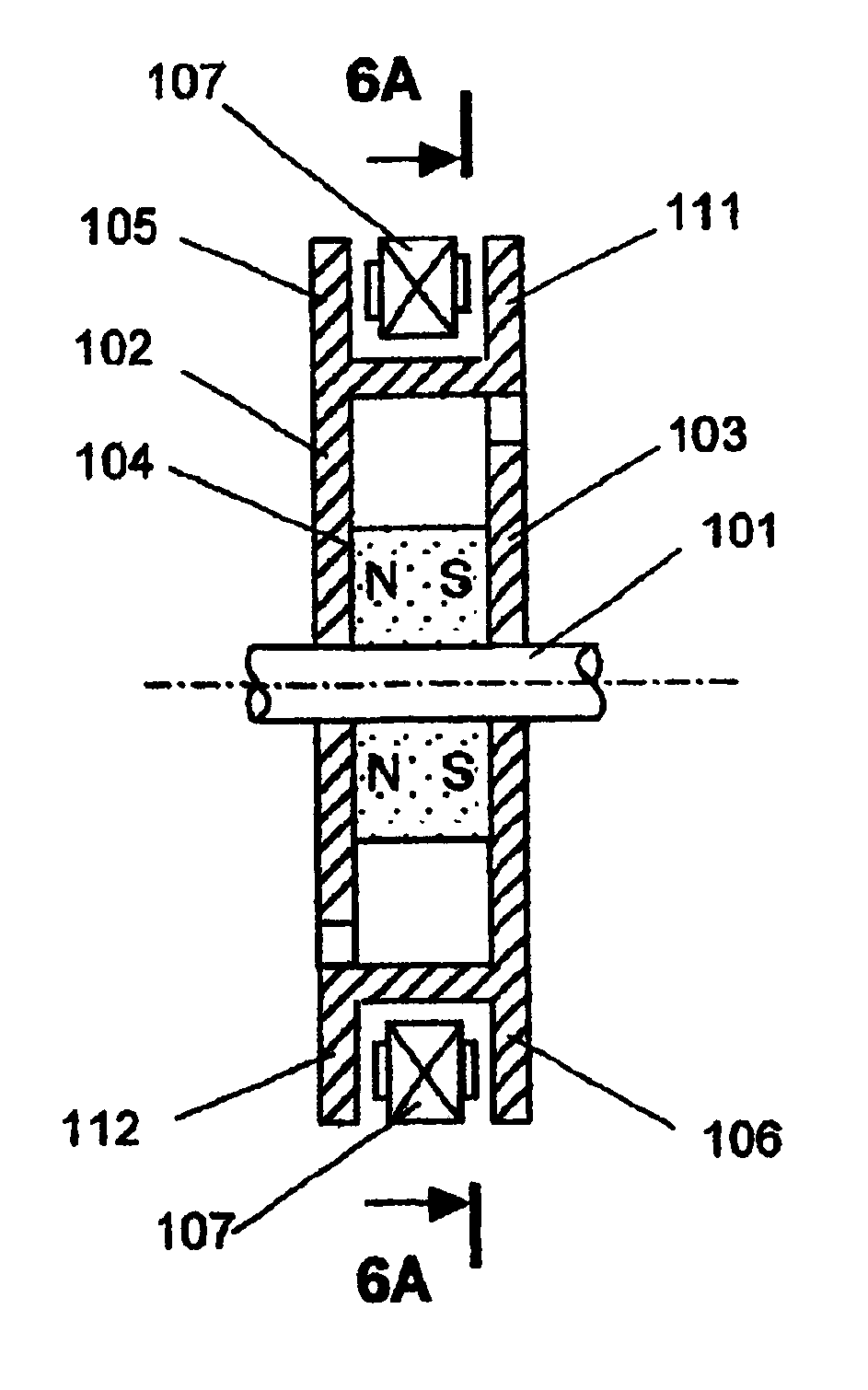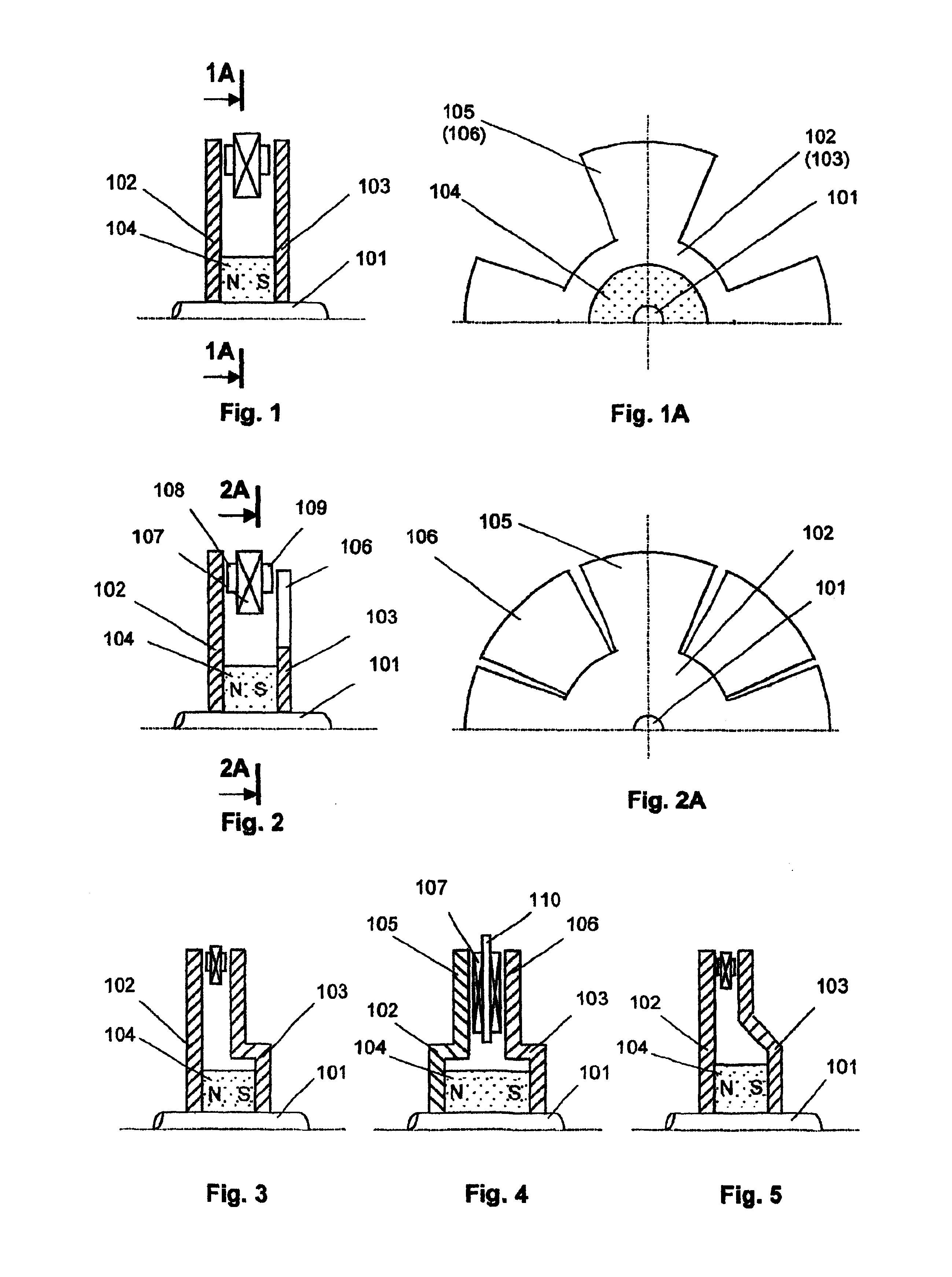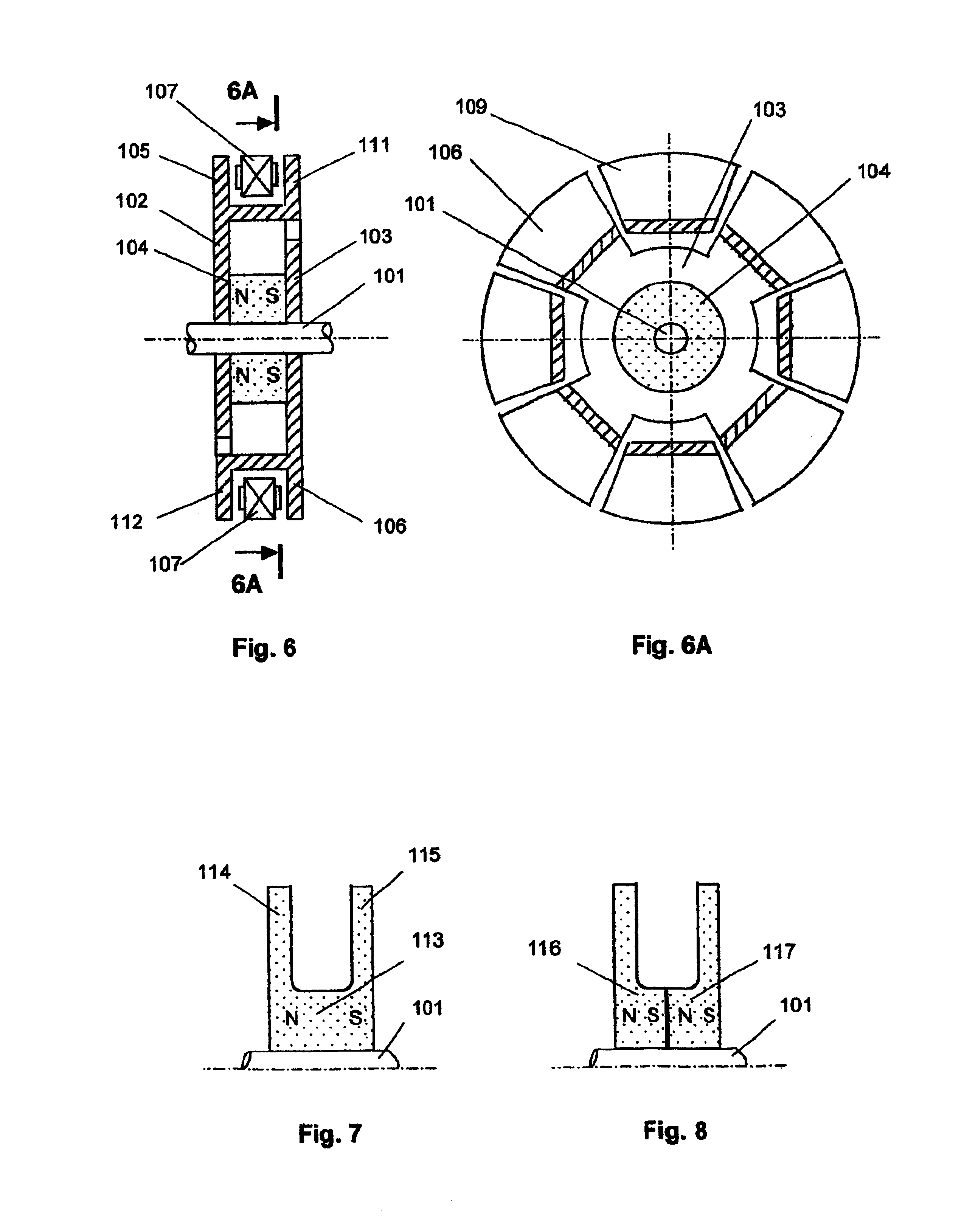Electric drive
a technology of electric drive and drive shaft, which is applied in the direction of dynamo-electric machines, magnetic circuit rotating parts, and shape/form/construction of magnetic circuits, etc., can solve the problems of difficult manufacturing of known devices, heavy weight, and difficult manufacturing of rotors, so as to increase reduce the radial size of devices. , the effect of increasing the power of electric drives
- Summary
- Abstract
- Description
- Claims
- Application Information
AI Technical Summary
Benefits of technology
Problems solved by technology
Method used
Image
Examples
second embodiment
[0110]In FIG. 9 and FIG. 9A the two-section rotor of the invention in accordance with the second embodiment is shown. The first section of this rotor comprises disks 118 and 119 mounted on the shaft 101, with the respective poles 123 and 124, made in the shape of teeth, as well as the axially magnetized polygon or cylindrical magnet 120 located between the disks 118 and 119 performing the function of magnetic circuits. The second section of the rotor is made in the similar fashion and comprises disks 121 and 122 mounted on the shaft 101, with the respective poles 123 and 124, made in the shape of teeth as well as the axially magnetized polygon or cylindrical magnet 125 located between disks 121 and 122. Disk 119 of the first section and disk 122 of the second section are made in a plate-like shape in such a manner that their poles are located between the poles of disks 118 and 121 respectively in the same planes with those latter. For the unification of the rotor parts all disks 118...
third embodiment
[0126]It is possible to make disks 223 and 224 integral with magnet 227 (as well as to make disks 228 and 229 integral with magnet 232), including an option when they comprises two identical parts—similar to what is shown in FIG. 18 and FIG. 19 for the electric drive being claimed.
[0127]An example of the electric drive design of the forth embodiment with a two-section rotor is presented in FIG. 21. This two-section rotor comprises disk 223 and magnet 227 of the first rotor section, disk 228 and magnet 232 of the second rotor section, and disk 233 that is adjacent to both sections. Teeth 234 and 235 of disk 233 are bent alternately in the direction of the first and second rotor sections, thus (together with teeth 225 of disk 233 and teeth 223 of disk 228) forming rotor poles. Stator coil windings 207 are installed in the gap formed by said rotor poles.
[0128]The operation of the devices claimed herein is based on electromagnetic interaction of alternately turned-on and turned-off stat...
fifth embodiment
[0134]FIGS. 25-32 represent the present invention. The magnetic rotor 301 [FIG. 26] comprises magnetized disks 303, 304 mounted perpendicularly on the shaft 302 and spaced between each other in axial direction. Disks 303, 304 are magnetized in axial direction and faced each other by opposite polarity sides. In other version disks 303, 304 are magnetized by cylindrical or polygonal magnet 305 mounted on the shaft 302 between them. The magnet 305 is magnetized in axial direction. Over their outer circumference the disks 303 and 304 have magnet poles 306 and 307 respectively, made in the shape of radial teeth. All poles 306 have the same polarity. All poles 307 have the same polarity. Poles 306 face poles 307 by opposite polarity. Location of poles 306 and 307 is similar, so that poles 306 projection on a plain perpendicular to the shaft 302 coincides with poles 307 projection on the same plane.
[0135]The stator 308 has a circumferential winding 309 and located between disks 303 and 304...
PUM
 Login to View More
Login to View More Abstract
Description
Claims
Application Information
 Login to View More
Login to View More - R&D
- Intellectual Property
- Life Sciences
- Materials
- Tech Scout
- Unparalleled Data Quality
- Higher Quality Content
- 60% Fewer Hallucinations
Browse by: Latest US Patents, China's latest patents, Technical Efficacy Thesaurus, Application Domain, Technology Topic, Popular Technical Reports.
© 2025 PatSnap. All rights reserved.Legal|Privacy policy|Modern Slavery Act Transparency Statement|Sitemap|About US| Contact US: help@patsnap.com



